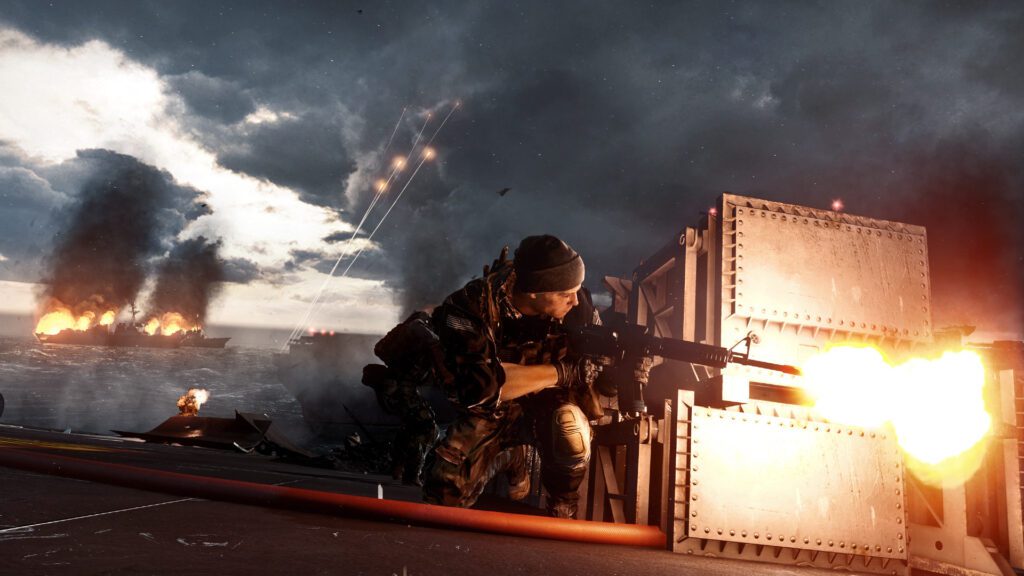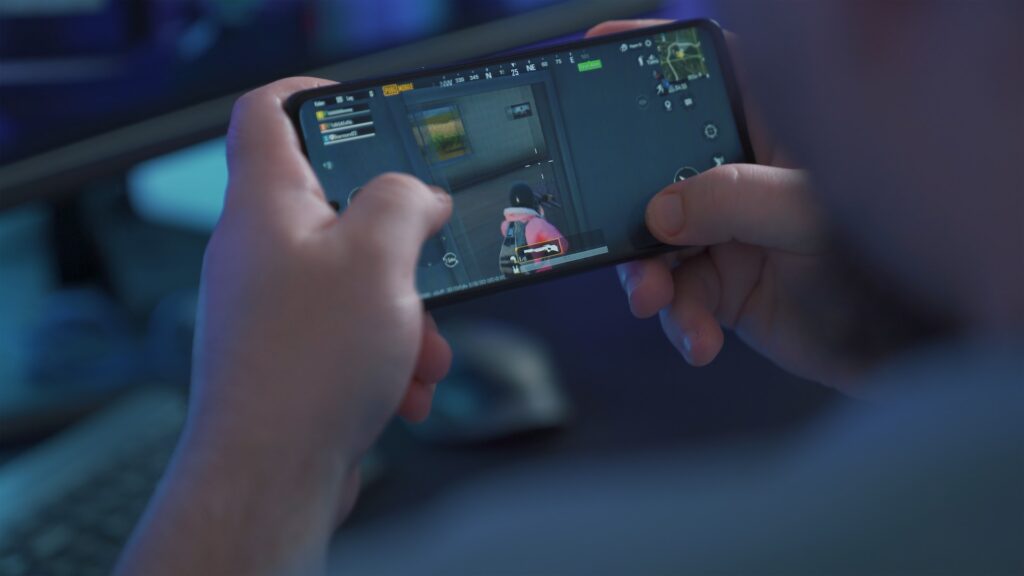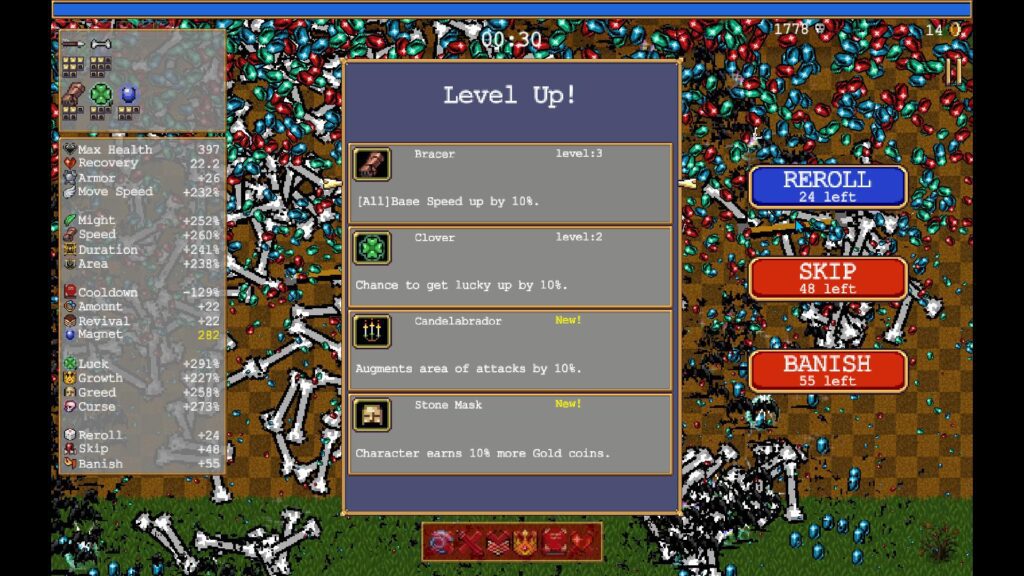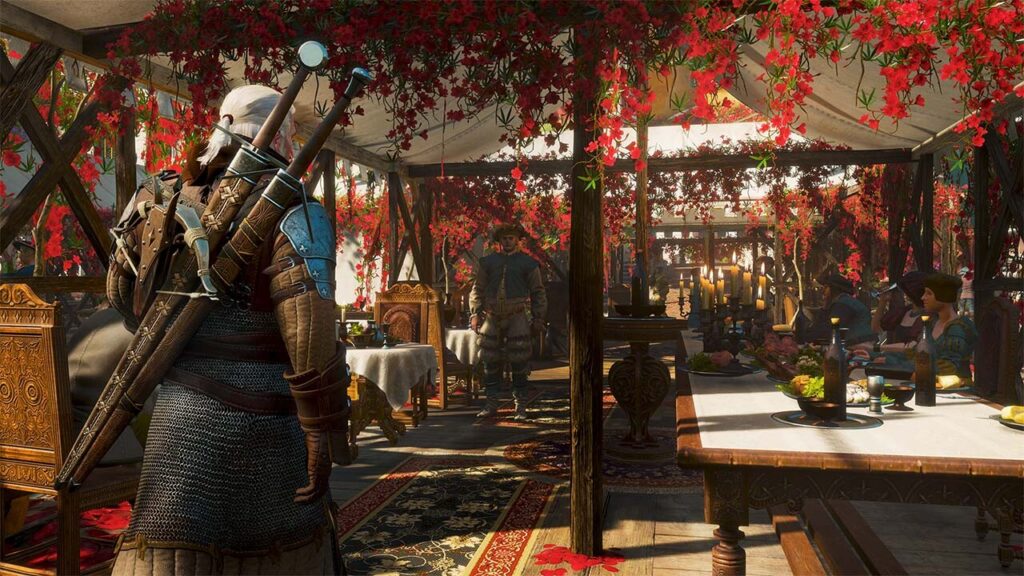Video games make up a significant fraction of the entertainment industry, with billions of players worldwide generating copious revenue. One of the main factors behind all this income is the price tag attached to your game – some are free and rely on in-app purchases and in-game ads to stay afloat, while others require an upfront fee in order to play the game.
In the latter case, the price of a game can make or break its success, as it affects not only how many people will buy it, but how much profit it can generate. Make it too expensive, and it might shy potential players away; too cheap, and your game might be perceived as a low-quality experience, which could deeply hurt your sales.
In this comprehensive guide for video game prices, we’ll explore the factors governing the price of a game and offer thoughtful insights into how to define them, giving you the tools to create a pricing strategy that maximizes profits and appeals to your target audience! You will also learn how to properly set the prices for extra content and some tricks developers use to price their games.
Factors that affect video game prices

While the factors might seem straightforward at first glance, there is a lot of nuance to discuss. Let’s take a look at the four main factors affecting video game prices and three others that are not always applicable.
Game budget and production costs
Developing fully-fledged games is no easy task, and their price reflects the countless hours and insurmountable effort put into them. However, no game is created equal – some are highly anticipated blockbusters from the top dogs (the so-called AAA game studios) in the industry while others are created by small teams of independent (or indie) developers.
Games with a bigger scope, like those released by CD Projekt Red, Bethesda, and Rockstar Games tend to have an insane amount of content. Come on, have you never felt overwhelmed with all the characters you could play in The Elder Scrolls V: Skyrim, and all the collectibles you could scavenge in Grand Theft Auto V?
Not only that, but they tend to have incredible production value. Their art style might be highly stylized, but the graphics and animations are excellent, the background music is a delight to listen to, the features and gameplay feel more polished than a Louvre sculpture, and their teams are huge, usually comprising more than a hundred professionals working on the same project at the same time.
All of this requires money – and quite a lot of it. Cyberpunk 2077, one of the most expensive games ever made, allegedly required around $316 million over 9 years of development. Grand Theft Auto V, a game that keeps on giving almost a decade after its release, required around $265 million.
Contrast this to the majority of indie games you see on the market, which often have to work with much lower budgets and technical constraints. Indeed, some viral games take very little time and resources – look at Cookie Clicker’s humble beginnings for example – but most indie games require at least $50,000 for a finished product.

So, how do game developers recoup this investment? The answer couldn’t be simpler: selling copies of their creations (and sometimes monetizing them, which is dependent on the chosen business model as we’ll see later in the article).
All in all, games with higher production value and larger scopes developed by AAA studios tend to be much more expensive than simpler indie games. While big-ticket games might have a higher price tag, they often provide a refined, premium experience that can be worth the investment for avid gamers.
On the other hand, indie games tend to be much cheaper – with many going as low as $5 or even less during seasonal sales – which might allow players to enjoy a wider variety of unique experiences, even if the production value is not as high.
Marketing expenses and sales expectations
The gaming industry, despite being a relatively new niche in the entertainment industry, has one of the most competitive markets, which makes standing out from the crowd a must.
From traditional methods (like putting up mobile ads and announcing projects at gaming conventions) to more niche ones (such as partnering with online personalities and running a “devblog”), there are many ways to advertise your project to the public.
However, marketing a game is not free – and the expenses can add up quickly. They are often taken into account when setting the price for a game – after all, the more you spend, the more copies you have to sell to recoup your initial investment.
In addition to marketing expenses, it’s key to consider how well a game is expected to do. Highly anticipated games, such as the next installment of a franchise or a remake of an old classic, are expected to sell well, so they have bigger marketing campaigns behind them and that usually makes the final price higher. On the contrary, games that don’t fit this description are typically priced lower in an attempt to attract more buyers.
Business model
Depending on the scope, genre, and audience of a game, some business models will work much better than others, and choosing the right one can play a critical role in pricing your game. The two most common business models for games are free-to-play (F2P) and premium.
The former is often the choice for mobile and online game developers – while the game is free, players can make in-app purchases to unlock cosmetic items, quality-of-life features, and even more content. This business model is reliant on sustaining a large player base to keep cash flowing in but has proven to be extremely successful in many cases.

On the other hand, premium games require gamers to pay an upfront fee to access the game, offering a straightforward revenue stream at the cost of potential players. This model is the usual choice of AAA studios and many PC/console indie developers.
But it’s not all black and white: many successful games, like Vampire Survivors and Bloons Tower Defense 6, have very low price tags but offer more content (DLCs) and cosmetics at varying fees. This effectively lets them harness the advantages of both business models while still being accessible to gamers everywhere.
In the end, choosing the right business model for your game is key to releasing a successful title. It’s important to weigh the pros and cons of both approaches and take your game’s audience and genre into consideration to make a well-informed decision.
Price of similar games
Another key factor to consider when setting the cost of your title is looking at the video game prices of similar games, especially those that are popular and with around the same level of production value. This lets game developers get an accurate price range for their creation and which price points might appeal to their target audience.
Taking Vampire Survivors as an example once again, the base game currently sits at $4.99 and its two DLCs are priced at $1.99. The title’s action-packed gameplay, persistent upgrades (making it a roguelite game), dozens of characters, and thousands of build possibilities to unravel made it an instant hit.
Following its massive success, a plethora of games similar in gameplay and production value flooded the Steam market, like Brotato, Spellbook Demonslayers, Void Scrapers, and Spirit Hunters: Infinite Horde, all of which have a price tag similar to Vampire Survivors’, give or take a dollar.

Miscellaneous factors
The following factors do not apply to all games, but it’s good practice to keep them in mind.
Platform fees and distribution costs
To get their games on the usual digital storefronts (like Steam and Epic Games) and gaming platforms (like Google’s Play Store and Nintendo Switch), developers often have to pay a fee. The actual figure will vary depending on the platform – some will require you to pay an upfront fee while others will take a percentage of your game’s sale price.
Furthermore, if you plan on sending physical copies of your game to retailers or even players themselves, then it’s fundamental to take production and distribution-related expenses into account.
Localization expenses
In short, localization is all about adapting a game to different languages. It is a deceptively hard job that often goes underappreciated by gamers all over the world and involves translating the game’s text, voice lines, lore snippets, and various elements into other languages without impacting their meaning and context.
As such, localization can be a time-consuming and resource-intensive process, especially if done for dozens of languages at once, which can add to the game’s final price.
Licensing and royalties
Last but not least, developers might be required to license third-party software or technologies to build their games. Notable examples include game engines like Unity and Unreal and software like Photoshop and Zbrush.
They might also need to pay royalties to be able to use certain intellectual property, like licensed characters from famous TV shows in their games.
These expenses might seem small, but they can be a massive money sink in the long run – especially for solo developers and tiny indie companies.

What about pricing DLCs?
Correctly pricing DLCs is just as tough as pricing a fully-featured game. Done correctly, they can provide a lucrative revenue stream and “free” media buzz for developers while offering players additional value and enjoyment. On the other hand, poorly priced DLCs can lead to player frustration, negative reviews, and even damage a studio’s reputation.
Charging a high price for a small amount of content, like a single map, a few new weapons, or a handful of hours worth of content, feels like a rip-off. Players expect value for their money and overpriced DLCs with minimal additions damage trust in the developers.
For instance, an expansion pack that adds only a few new levels to a puzzle game for $6.99 will likely be seen as “too expensive” and not worth the investment.
Similar things have happened with real games, too. Remember Diablo III’s Rise of the Necromancer fiasco, in which Blizzard was charging $15 for a new playable class and no more, or Company of Heroes 2: Ardennes Assault, which featured “a few hours of single-player content” for $40? Or, better yet, the infamous golden horse armor for The Elder Scrolls IV: Oblivion, priced at $2.50, which became a laughingstock and a cautionary tale in the industry?
That said, players are more than willing to pay a premium for substantial story expansions that offer new characters, locations, quests, and stories to experience. The Witcher 3: Blood and Wine was a massive DLC that added countless hours of fun for a reasonable price of around $20. It felt like a whole new game, making the price tag more than justified.

Also, many players enjoy customizing their characters’ appearances. DLCs offering unique skins, outfits, and designs can be a great way to generate revenue, especially if priced competitively (usually in the $2-$10 range).
With that out of the way, let’s talk about the best practices for setting the price of a game DLC:
- Align price with content: ensure the price reflects the amount and quality of content offered. A massive expansion should cost more than a simple character skin, but both should feel worth their price;
- Be transparent: clearly communicate what’s included in each DLC package. We all love surprises, but not when it comes to the content we’re getting;
- Consider offering bundles and sales: if you plan on releasing multiple DLCs, packaging them into a single bundle at a discount will increase its perceived value and encourage purchases;
- Consider your audience: what works for a free-to-play mobile game might not work for a premium PC title. Know your players and what they’re willing to pay for!
Remember: the goal is to create a win-win situation where players feel they’re getting great value for their money, and developers can sustainably continue supporting and expanding their games.
Ok, but when do I lower video game prices?
We all love a good deal. In our gaming context, snagging our favorite and anticipated titles at a discount is like hitting the jackpot. For developers, however, lowering prices requires some planning. It sounds counterintuitive, but let us explain.
Discounts and sales are powerful tools in a developer’s arsenal. They can breathe new life into an older game, attract new players, and generate buzz for the project. But timing is everything: slashing prices too soon after launch can backfire, leaving early adopters feeling cheated (especially with costlier AAA titles).
Don’t forget that your most loyal fans are often those who buy at full price, and you want to try your best not to alienate them.

So, what do you do? As with almost everything, start small and build gradually. Launch discounts of 5%-20% can create initial excitement without devaluing your game. As time goes on, you can increase discounts during seasonal sales or special events, but don’t go all out.
Jumping from a 25% discount to a whopping 80% out of nowhere will feel jarring and might make players wonder if something’s wrong with your game.
Sometimes, permanent price drops are necessary, especially as your game grows old. After some years, when sales have plateaued, lowering the base price can attract a whole new audience. Just be strategic about it, perhaps tying it to a major update or the release of new content to create a sense of added value.
The devious tricks and psychology behind video game prices
Whatever your pricing plan is, having a grasp of how players perceive value can be a game changer. It’s not just about crunching numbers.; understanding the psychology behind video game pricing is key. Behind every purchase decision, there’s a mix of human behavior, cognitive biases, and emotional responses subtly influencing them.
One of the most effective tricks is price anchoring, where the first price a player sees becomes their reference point for judging all other prices. This principle extends beyond just the base price. For instance, when you’re browsing DLC or in-game cosmetics, the first price you see sets the tone for how you perceive the value of everything else.
Another trick up developers’ sleeves is the decoy effect. Have you ever wondered why some games offer multiple editions? The priciest option isn’t usually there to sell; instead, it exists to make the middle option look much more appealing. This strategy, which also goes by “asymmetric dominance,” is all about influencing your decision-making process.
Take a mobile game priced at $9.99 as your standard edition. The developer might also offer a “basic edition” with limited features for $4.99, and a “deluxe edition” with exclusive content and microtransactions for $24.99. The latter might seem too expensive, pushing players towards the middle-ground option, which suddenly feels like a much better value.
Sneaky, right?

Then, there’s the power of charm pricing, a well-known principle revolving around prices ending in 9 or 99. They’re everywhere because they work – our brains tend to round down, so $19.99 feels closer to $19 than $20, even though we know better. It’s a small trick, but in an environment so competitive every little edge counts.
Developers can also tap into the concept of price-quality bias, as many consumers associate higher prices with better quality (even when there’s no actual difference.) This can be particularly relevant for premium or deluxe editions of games, where the higher price point itself can be part of the appeal, while also serving as a good decoy for the average gamer.
Moving away from paid games, free-to-play (F2P) games with microtransactions can take advantage of the endowment effect. Once players invest time in a game, they’re more likely to spend money to protect or enhance that investment. Besides getting (on average) more players than paid games, this is why some F2P games end up generating more revenue than popular premium titles – the more time we sink into something, the harder it is for us to abandon it.
Video game prices: how much should I charge for my game?
As you have gathered from this article, there is no easy answer to that question. Setting the perfect price for a video game should be largely based on what your game has to offer – think of all its features, hours of content, replayability, and unique selling points when thinking of a price.
You should also take into account your game’s production value and genre, the price of similar games, the chosen business model, marketing expenses, and all the miscellaneous fees if applicable, as they can drive the price tag higher than expected.
Many new game developers tend to price their games anywhere from $1.99 to $14.99, with $4.99 and $9.99 being the most popular price tags. Some claim it’s too cheap, but, for many gamers, it strikes the perfect balance between affordability and quality, especially when you consider that AAA games got more expensive last year.
That said, some indie games are erring on the side of being more expensive that were insanely successful:
- No Man’s Sky ($60), despite its rocky release, the game has made a much-needed comeback. Many of the game’s glaring issues were fixed, and it’s in its best state ever;
- Raft ($20), a game that was released in 2022 and allows players to embark on a nautical journey across the seas as a lone castaway or as a group, is considered one of the best indie releases of 2022;
- Hollow Knight ($15), a 2D platformer that looks gorgeous, is a game that reached universal acclaim. It’s set to get a highly anticipated sequel later this year!
All in all, it’s up to you to decide on a price tag that feels fair!
And if you need help getting your game up to speed you can always count on us. At Main Leaf, we offer a variety of custom-tailored solutions for all things game development – be it writing a GDD for you, handcrafting awesome game assets, or creating a fully-fledged game from scratch in Unity or Unreal game engines.
We’ve been in the industry since 2010 and have worked on numerous gaming-related projects. Furthermore, our fully transparent development process ensures that you’re always in the loop as far as expenses go. To get started with Main Leaf, all you have to do is request a game quote below. Contact us today and let’s start creating the game of your dreams!

